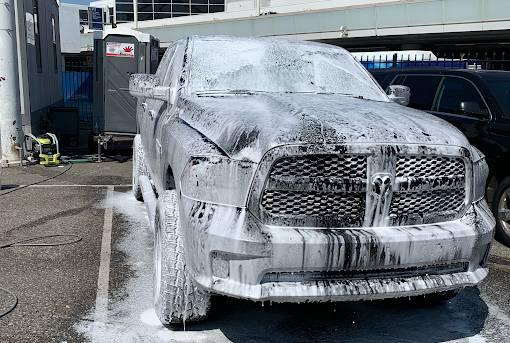Ceramic coatings have revolutionized the automotive detailing industry by providing a cutting-edge approach to vehicle protection and enhancement. It is important to comprehend the science behind ceramic coatings, whether you are an automotive enthusiast or just want to maintain the best possible condition for your vehicle.
In this post, we will talk about the chemistry and technology that contribute to the allure of ceramic coatings for car owners.
Understanding Ceramic Coating
A liquid polymer is essentially what a ceramic coating is on a car’s outside surfaces. It reacts chemically with the factory paint to produce a hydrophobic (water-repellent) layer that provides protection against pollutants in the environment. The science of ceramic coatings is a complex combination of nanotechnology and chemistry.

Nano-Particles
Nanoparticles, which are extremely small particles with a size of less than 100 nanometers, are an essential part of ceramic coatings. These nanoparticles, which are frequently made of titanium dioxide (TiO2) or silicon dioxide (SiO2), are well known for their robustness and ability to withstand environmental conditions.
Chemical Bonding
Once applied to a vehicle’s surface, ceramic coatings establish a robust chemical bond with the underlying paint. This covalent bond makes the ceramic layer an integral part of the paint structure, ensuring exceptional longevity and performance.
How Ceramic Coatings Provide Protection
Let’s explore the mechanisms through which ceramic coatings safeguard your vehicle:
- Hydrophobic Properties
The hydrophobic nature of ceramic coatings, attributed to the nano-sized particles, results in a highly textured surface with a significant amount of surface area. When water contacts this surface, it forms droplets that roll off effortlessly, carrying away dirt and contaminants. This self-cleaning effect contributes to a cleaner vehicle for longer periods.
- UV Resistance
Ceramic coatings exhibit resistance to ultraviolet (UV) rays, the culprits behind paint oxidation and fading. The coating acts as a shield, protecting against UV damage and preserving the vehicle’s color and finish.
- Chemical Resistance
Ceramic coatings offer protection against various chemical contaminants, including acidic rain, bird droppings, tree sap, and road salts. The chemical structure of the coating deters these substances from bonding with the paint.
- Scratch Resistance
While not entirely impervious to scratches, ceramic coatings provide enhanced resistance to light scratches and swirl marks due to their hardness and durability.
- High-Temperature Resistance
Ceramic coatings can withstand high temperatures, making them ideal for shielding the vehicle’s exterior from the heat generated by the engine, brakes, and exhaust components.
How Ceramic Coatings Provide Protection
Understanding the science behind ceramic coatings reveals the numerous benefits they offer:
- Longevity
Thanks to the covalent bonding and durability of ceramic coatings, they can provide several years of protection, offering long-term benefits.
- Enhanced Appearance
The hydrophobic and self-cleaning properties keep the vehicle looking cleaner and more vibrant. The reflective nature of the coating can enhance the paint’s gloss and depth.
- Reduced Maintenance
With less frequent cleaning and waxing required, vehicle maintenance becomes less time-consuming and cost-effective.
- Resale Value
A well-maintained, ceramic-coated vehicle can command a higher resale value due to its preserved appearance.
- Protection from Environmental Factors
Ceramic coatings offer a robust defense against UV rays, chemical contaminants, and the elements, safeguarding the vehicle’s paint and finish.
Application of Ceramic Coatings
The application of ceramic coatings demands skill and precision and is typically conducted in a controlled environment, such as a professional detailing shop. The process involves comprehensive surface preparation, including washing, decontamination, and, at times, paint correction to address existing imperfections.
After the surface is adequately prepped, the ceramic coating is applied using specialized applicators. The coating then cures, forming a strong chemical bond with the paint. Once cured, it becomes an integral part of the vehicle’s exterior.
Preserving the coating’s effectiveness necessitates proper maintenance. Regular washing with pH-neutral soaps and avoiding abrasive cleaning methods will extend the life of the ceramic coating.
Conclusion
The science behind ceramic coatings is a captivating fusion of nanotechnology and chemistry. Understanding how these coatings function can help car owners truly appreciate their benefits in preserving and enhancing their vehicles. From hydrophobic properties to UV resistance and scratch resistance, ceramic coatings offer a comprehensive solution for maintaining a vehicle’s appearance and safeguarding its value. If you seek long-term paint protection and reduced maintenance, ceramic coatings are a compelling choice supported by solid scientific principles.
For more information, get in touch with Leading Mobile Detailing.

